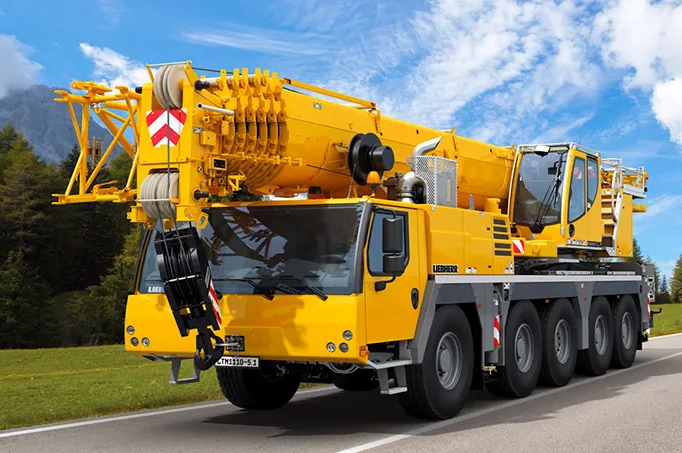In this article, we take a deep dive into understanding the pivotal role of slip rings application in aerial lifts. We explore their function, the types used, performance parameters, and the challenges they might encounter. Real-world case studies highlight their practical applications, while prospects shed light on the path ahead. The article concludes with a round-up of frequently asked questions, providing clarity on common queries and concerns.
Introducing Slip Ring Applications in Aerial Lifts
In our world of skyscraping infrastructures, one thing that’s grown indispensable is the aerial lift. From construction sites and firefighting to tree care and window cleaning, these elevated platforms have facilitated safe and effective high-altitude operations. Mechanically, an aerial lift is a vehicle-mounted or standalone device that elevates personnel and equipment to higher levels. However, the silent workhorse behind the seamless operation of these machines is often overlooked—the humble slip ring.
A slip ring plays a critical role in the functionality of aerial lifts, operating primarily as the ‘middleman’ between the stationary and rotating parts of the lift. Their primary function involves transmitting electrical power and signals from a stationary platform to a part of the lift that needs to rotate or move. This feature enables the continuous operation of machinery without any power or signal transmission interruptions. Without slip rings, an aerial lift would face restricted movements and capped operation durations.
The anatomy of aerial lifts is complex and dynamic, mounting more expectations on the performance of slip rings. They not only need to facilitate the basic operational necessities but also contribute to safety measures, higher efficiency, and tackle severe working conditions. In this article, we will journey through the significant role, technical intricacies, challenges, and overseen capabilities of slip rings, shining a light on this often under-acknowledged component in the operation of aerial lifts.
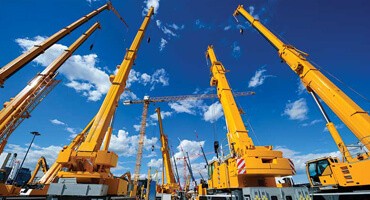
The Role of Slip Rings in Aerial Lifts
Picture an aerial lift in operation: it extends, pivots, retracts, and moves smoothly and almost magically, providing operators with a range of motion that is essential in complex work scenarios. But have you ever wondered how power and control are maintained during all these movements? The answer lies within a mechanism known as the slip ring.
A primary role of slip rings in the context of aerial lifts is to ensure flawless power and signal transmission. To understand this better, let’s take a glance at the basic function of a slip ring. Essentially, a slip ring is an electromechanical device that allows the transmission of power and electrical signals from a stationary body to a rotating structure. In the case of an aerial lift, the axis of rotation could be the lift boom or the basket. The slip ring connects to the rotating component, allowing it to move freely without hampering the continuous transmission of power or data.
But the role of slip rings goes beyond just power and signal transmission. By ensuring an uninterrupted flow of electricity and signals, slip rings help elevate the lift’s performance. For instance, they enable the lift’s continuous turntable rotation, which is necessary for maneuvering the platform to different positions. This rotation capacity amplifies the versatility and functionality of the aerial lift, enabling its usage in a wider range of scenarios.
Furthermore, facilitates advanced safety and communication systems present in modern aerial lifts, such as emergency lowering, intercom systems, basket load sensing, and more. By allowing such continuous communication between various parts of the lift, slip rings contribute significantly to a lift’s multipurpose capabilities.
As we delve deeper into various aspects of slip rings, we see that they aren’t merely connectors for power and data – they serve as lifelines for aerial lifts, supporting the system’s operational requirements, enhancing safety, and providing the versatility that we’ve come to expect from such equipment. Without their silent and unceasing service, the aerial lifts as we know them, would simply not exist.
Types of Slip Rings Used in Aerial Lifts
The application of aerial lifts is quite diverse, ranging from construction and maintenance work to emergency services like firefighting. Coupled with the emerging technological advancements, each form of application demands specific attributes from slip rings. The end goal, of course, remains common – to ensure unceasing power and signal transmission. To meet these diverse requirements, different types of slip rings are employed in various aerial lift models. Let’s break down a few of these types.
Electrical Slip Rings: The most common and widely used slip rings are electrical slip rings. These rings transmit electric power and signals between stationary and rotating parts. They are typically made up of a rotating metal ring and a brush that maintains contact, allowing for transmission. In an aerial lift, an electrical slip ring could be especially useful to control the movements of the lift, such as extension, retraction, or rotation.
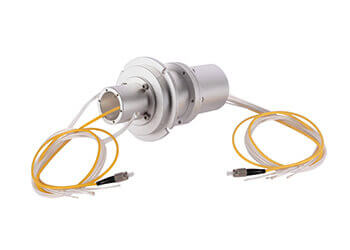
Fiber Optic Rotary Joints (FORJ): Also known as FORJs (Fiber Optic Rotary Joints), these slip rings transmit optical signals. Given the high speed and massive data-carrying capacity, fiber optic slip rings are becoming increasingly prevalent in lifts equipped with sophisticated electronic devices and systems.
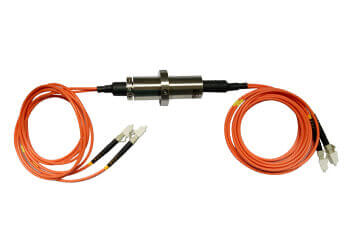
Pneumatic/Hydraulic Slip Rings: Aerial lifts often use hydraulic mechanisms for actions like lifting and tilting. Pneumatic or hydraulic slip rings transfer fluid or gas under pressure from a stationary inlet to a rotating outlet. Imagine a lift that needs to operate pneumatic tools at height (like an elevated construction drill); a hybrid slip ring combining electrical and pneumatic elements would be an ideal fit.
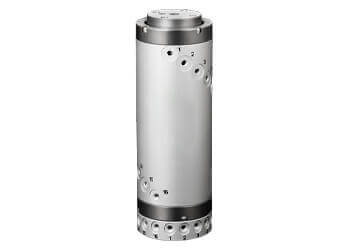
High-Frequency Slip Rings: Where high-speed data and signal transmission are required, high-frequency (RF) slip rings come into play. They are used for transmitting signals of high bandwidth, and their application would likely be in advanced aerial lifts with high-frequency communication or radar systems.
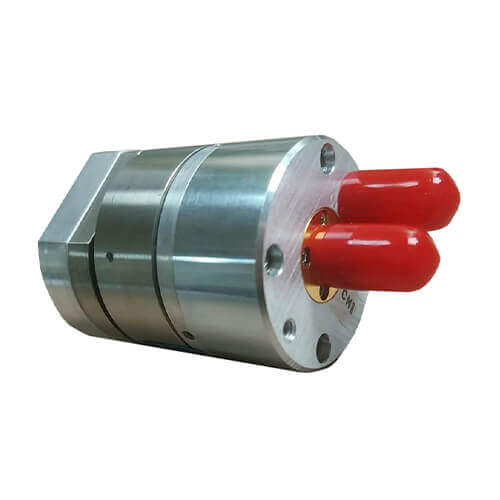
Understanding the different types of slip rings is like knowing the alphabet for equipment designers; it provides the fundamental building blocks for customizing aerial lifts to meet specific purposes or tasks. Recognizing the type of slip ring suitable for different operational needs ensures the aerial lift is optimally powered, responsively controlled, and functionally versatile.
Key Performance Parameters for Slip Rings in Aerial Lifts
Just like any other technical component, the selection of an appropriate slip ring for specific aerial lift applications takes into account several key performance parameters. These parameters are essentially a roadmap to understanding how the slip ring will perform, the extent of its capabilities, and whether it will be able to fulfill the specific requirements of the aerial lift operation. Let’s take a closer look at these critical parameters:
Power and Signal Transmission Capabilities: The core job of a slip ring is to maintain continuous power flow and signal transmission even while parts of the aerial lift move. The capacity to handle power loads varies widely depending on the specifications and needs of the lift system. Similarly, the complexity and number of signals a slip ring needs to manage can differ. The type and amount of data (e.g., video, sensor feedback, control signals) that needs to be handled are significant aspects to consider.
Rotational Speed: The rotational speed of a slip ring — how fast it can spin while maintaining effective transmission of power and data — is another critical factor. Faster rotations may be required in some lifts for quick maneuvering.
Size and Weight: The physical constraints of an aerial lift design often determine the size and weight of the slip ring. Compact and lightweight designs are usually preferable to avoid any bulkiness or unnecessary load on the lift system.
Durability: Aerial lifts are often exposed to harsh environments that can involve dirt, moisture, high altitude, and more. The slip rings used should have robust construction and design to withstand these conditions without compromising their operation.
Maintenance Requirements: Ideally, a slip ring should operate smoothly with minimal routine maintenance. Easy access for cleaning or replacing parts can be a notable characteristic, contributing to productivity and minimal downtime.
These key performance parameters shape the final selection of slip rings in an aerial lift’s design. Considering such factors ensures that the lift operates at its peak performance, handling specific job requirements while providing safety and reliability. In the end, the choice of the slip ring doesn’t merely revolve around its basic function; instead, it is about strategically matching operational needs with the correct type and class of slip ring, enabling the aerial lift to serve its multipurpose role to its full potential.
Slip Ring Applications in Aerial Lifts: Technical Challenges and Solutions
Despite the indispensable role of slip rings in aerial lifts, their application isn’t without challenges. From environmental to operational issues, a variety of factors can impact a slip ring’s performance. Thankfully, advances in technology and design innovation have provided effective solutions for these hurdles. Let’s discuss some of the most common challenges and their corresponding solutions:
Challenge: Environmental Factors
Environmental conditions like moisture, extreme temperatures, and dust can often hamper the efficiency of slip rings, causing potential operational interruptions.
Solution: Protective Housing
To counter these conditions, current generation slip rings are often equipped with protective housing. This protective layer shields them from harsh environmental conditions, improving their durability and lifespan.
Challenge: Maintenance and Serviceability
Maintaining and servicing the traditional slip rings used in aerial lifts can be challenging. Deterioration of the contact materials over time can lead to increased electrical resistance, resulting in degraded signal or power transmission.
Solution: Contactless Slip Rings
Recent advancements in slip ring technology have introduced contactless or brushless slip rings. They use electromagnetic fields to transmit power and signals, eliminating physical contact and reducing wear and tear, thus improving lifespan and reducing maintenance needs.
Challenge: Size Limitations
The need for compact and lightweight aerial lift designs restricts the size and weight of components, including slip rings.
Solution: Miniaturization
Through technological advancements, manufacturers have been successful in developing miniaturized slip rings. Despite their small size, they can effectively handle required power loads and signal transmissions, making them suitable for more compact lift designs.
Challenge: Complex Signal Transmission
With aerial lifts becoming increasingly sophisticated, the amount and complexity of signals that need to be transmitted are growing.
Solution: Fiber Optic and High Frequency Slip Rings
Fiber optic slip rings enable high-speed data and signal transmission. Similarly, high-frequency slip rings are being used for high-bandwidth signals. These developments have enabled slip rings to handle the complex data transmission requirements of modern lifts.
Understanding such challenges and adopted solutions further emphasizes the essential role of slip rings in aerial lifts. These adaptations show the determination to combat technical obstacles and drive the aerial lift technology forward, making slip rings a cornerstone in their efficient, effective performance.
Case Studies: Slip Ring Applications in Real-World Scenarios
Examining real-world applications of slip rings in aerial lifts affords a clearer picture of how these components perform under operational circumstances. Let’s explore a couple of scenarios:
Case Study 1: Fire Fighting Lifts
Firefighting operations demand quick responses, requiring aerial lifts that can maneuver rapidly to rescue people from high-rise structures. In such situations, the slip ring’s ability to maintain continual power transmission during the rapid extension, rotation, and retraction of the boom is vital.
For example, a fire department lorry in New York City has an aerial lift that utilizes a high-speed electrical slip ring. This allows operators to maintain control of the lift’s movements even when it’s rotating at high speeds to reach victims, ensuring a swift, faultless operation.
Case Study 2: Construction & Maintenance Lifts
A construction company in Shanghai uses aerial lifts for window installation and maintenance on skyscrapers. Their lifts need to power pneumatic tools at height while maintaining secure communications and control systems.
For this demanding application, the company uses a hybrid slip ring (combining electrical and pneumatic elements). The electrical section of the slip ring ensures continuous power supply to the lift while enabling communication and control, whereas the pneumatic aspect drives the power tools. Durable housing added around the slip ring wards off construction dust and debris, ensuring a prolonged service life.
Case Study 3: Telecommunications Lifts
Telecommunication companies routinely work with aerial lifts for the maintenance and installation of antenna systems. These lifts often host sophisticated electronic devices and systems, requiring speedy and voluminous data transmission.
A telecommunication giant in Australia utilizes an aerial lift fitted with a fiber optic slip ring. This allows the company to transfer large amounts of data seamlessly between the stationary base and rotating parts like the antenna, aiding in tasks such as live signal testing and diagnosis.
These case studies, just the tip of the iceberg, illustrate the diversity in slip ring applications. Chern all the unique operational needs across various industries, one can only marvel at the versatility that slip rings provide to aerial lifts. As technology advances, it’s intriguing to imagine future applications and enhancements of slip rings in the world of aerial lifts.
The Future of Slip Rings in Aerial Lifts: Advances and Predictions
In a rapidly evolving technological landscape, the components of aerial lifts need to align with these changes. As an integral part of such systems, the slip ring is no exception. Here are a few future perspectives related to slip rings in aerial lift technologies:
Increasing Complexity of Signal Transmission
With advancements in wireless communication, real-time analytics, and sophisticated sensor technologies, the amount and complexity of signal transmission in aerial lifts are bound to rise. To keep up with these changes, we can expect to see slip rings capable of handling higher data rates and supporting advanced protocols. Fiber optic and high-frequency slip rings are likely to become increasingly common as they offer high-speed and high-bandwidth data transmission.
Improved Durability with Material Science and Design Advances
As material science advances, we can expect slip rings that are more resistant to wear and tear, ensuring longer service life and reduced maintenance. Advancements in design strategies can also lead to improved dust, water, and temperature resistance. This will make them more reliable for use in harsh environments, from the depths of the ocean to the rigorous conditions on a construction site.
Integrating Smart Features
In line with the global trend towards automation and digitization, the future may see ‘smart’ slip rings equipped with sensors for predicting maintenance needs, troubleshooting issues, enabling self-diagnostics, and reporting status. This would decrease downtime and increase efficiency.
Miniaturization
With aerial lift systems striving to become more compact and lightweight, the future of slip ring technology may trend towards further miniaturization. Despite the diminished size, these advanced slip rings will be expected to maintain or even surpass the performance of their larger counterparts.
In addition to these trends, there are also growing talks about incorporating green technologies into aerial lift design. As part of this trend, future slip rings may well play roles in energy-saving functions or even converting kinetic energy back into power, contributing to more energy-efficient aerial lifts.
As we look forward, the importance of slip rings in the evolution of aerial lifts becomes ever clearer. Their adaptability and innovations are likely to continue enabling aerial lifts to meet diverse operational demands and, at the same time, adapt to the ever-increasing march of technology.
Conclusion
In conclusion, slip rings are an integral part of aerial lifts, bringing efficiency and fluidity to their operation. As this component continues to evolve, so does the potential of aerial lifts in the journey towards the skies.
FAQs on Slip Ring Applications in Aerial Lifts
Below are some commonly asked questions on the subject of slip ring applications in aerial lifts:
Q1: What is the main function of a slip ring in an aerial lift?
A: A slip ring in an aerial lift primarily maintains an uninterrupted electrical connection between parts that need to rotate relative to one another. This allows the lift to transfer power, control signals, and data, ensuring smooth operation even when elements of the lift are in motion.
Q2: How often do slip rings need to be replaced in an aerial lift?
A: The lifespan of a slip ring largely depends on its design, the intensity of use, the environment it works within, and its maintenance regimen. While there is no universally applicable timeline, indications like diminished performance, increased electrical resistance, and noisy operation often suggest the need for a check-up or replacement.
Q3: How do you maintain a slip ring in an aerial lift?
A: Routine maintenance of a slip ring often involves cleaning to remove any dust or debris and checks for wear and tear. However, procedures can differ depending on the specific type and model of the slip ring. Always follow the manufacturer’s instructions for maintenance procedures to ensure optimal operation and longevity.
Q4: Are there different types of slip rings for different aerial lifts?
A: Yes, there are various types of slip rings designed to cater to the diverse needs of different aerial lifts. These variations can stem from power transmission needs, the complexity of data transmission, environmental conditions, and size constraints. Specific types include electrical, pneumatic, hydraulic, fiber optic, and high-frequency slip rings, among others.
Q5: Can a slip ring affect the lifting capacity of an aerial lift?
A: Indirectly, yes. The size and weight of a slip ring contribute to the total weight of a lift, which affects the lift’s payload capacity. Therefore, it’s important to select a slip ring that suits the lift’s design and purpose, providing the performance needed without unnecessarily adding to the weight.
Q6: Is it possible to customize a slip ring for specific aerial lift requirements?
A: Most manufacturers offer the possibility to customize a slip ring based on the specific needs of an aerial lift, which can range from power capacity, signal types, speed of rotation, and even the form factor.
See What We Can Do

